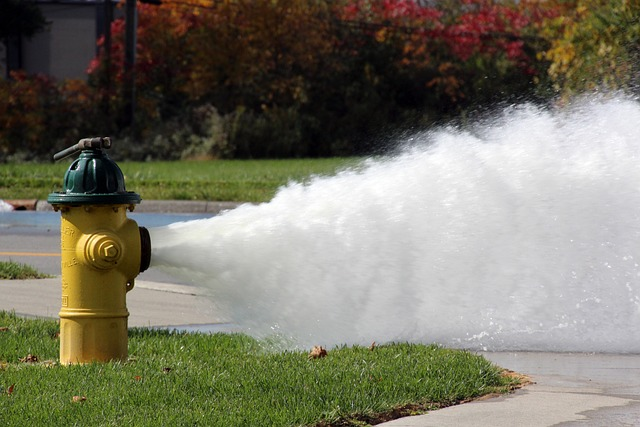- Home
- Supply Insights
- Hydrant Flushing Best Practices
Hydrant flushing is the deliberate purging of water mains to maintain water quality standards and test systems. It is a crucial part of water quality maintenance to ensure community health. But what are some of the best practices, and why are they so essential? This guide unpacks the 'whats' and 'whys' of hydrant flushing, explaining the process and the impacts on water quality.
Key Takeaways:
- Hydrant flushing is essential for removing sediments and biofilm in water main pipes, ensuring high-quality water supply and preventing flow restriction.
- Regular flushing provides multiple benefits, such as maintaining water quality, extending the longevity of the water mains and hydrants, and identifying system weaknesses while protecting our waterways and sensitive ecosystems.
- The process involves specialized tools, diffusers, water quality instruments, and chemicals to enhance efficiency and safety during the flushing, promoting the longevity of water system components.

Benefits of Regular Hydrant Flushing
Over time, sediments, biofilm, and other impurities can accumulate in water mains, affecting the color, taste, and odor of potable water. Flushing hydrants increases water safety and enhances the effectiveness of secondary disinfection processes, greatly affecting water quality throughout the system.
Hydrants should be flushed at least twice per year, while dead ends may require more frequent flushing. Identifying and understanding dead ends in your distribution system is especially important. Flushing dead ends is critical to community and environmental health. Often times, a municipality will use automatic flushing devices to improve efficiency and ensure compliance for maintaining water quality. These devices can be permanent installs in critical areas, or portable units that can be easily moved from hydrant to hydrant as needed.
Beyond the improved water quality, hydrant flushing serves an important preventative maintenance activity. By clearing out sediment or stagnant water in the system, flushing ensures the components of the water distribution system, such as valves and fire hydrants, function optimally. This is crucial for public services. Firefighters rely on properly working hydrants and utilities, and flushing hydrants is a way for professionals to mark, clean, or clear brush around hydrants in case of an emergency.
Hydrant Exercising

During regular and more complex unidirectional flushing, opening a hydrant gate valve involves several steps to ensure both safety and the effectiveness of the flush. Initially, the operator must inspect the hydrant for any visible damage or leaks.
Using a hydrant wrench or powered valve exerciser, the operator turns the valve slowly in a counterclockwise direction, carefully controlling the open rate to prevent water hammer—a surge of pressure that can damage the pipes. Once the desired flow is achieved, the valve is left open for a set period to allow for complete flushing before being closed.
Environmental Considerations
Chlorine is commonly used in water treatment for its disinfecting properties, but it can be harmful to aquatic life. That's where the process of dechlorination comes in as a vital step in the hydrant flushing process. This procedure involves the removal of chlorine from water before it is discharged into the environment. Dechlorination tablets and diffusers ensures that the water returning to lakes, rivers, and streams is safe for fish and other wildlife, contributing to the overall eco-friendliness of hydrant flushing practices.
Professionals are constantly working to ensure the amount of chlorine in potable water is safe and meets the standards for the EPA Safe Drinking Water Act (SDWA). Automatic Flushing units come with built-in sensors to ensure that the residual chlorine content in the water system is correct while dechlorinating water released into the environment.
Dechlorination Tablets & Chlorine Testing
If you're familiar with flushing hydrants for your municipality, you probably know about the importance of Dechlor Tablets. These chemistries quickly interact with the water coming through the hydrant to remove chlorine and help make it safe for the environment.
Removing residual chlorine from the water is important so that it does not negatively impact sensitive environments further downstream. Dechlor tablets are quickly loaded into dechlorinating diffusers before a professional opens the valve, allowing free water flow.
During hydrant valve exercising, water quality measurements can be taken with instruments like the Hach DR300. Water quality measurements act as an early warning to potential issues in the distribution system and are critical to a successful flushing program.
Water samples are collected and frequently analyzed onsite with chlorine colorimeters and turbidimeters. Free chlorine readings are taken and recorded at the end of flushing to ensure residuals are within tolerable ranges.

Extending the Lifespan of Water Mains and Hydrants
Hydrant flushing also contributes to the longevity of water distribution systems. By removing tuberculation and sediment build-up, flushing can extend the lifespan of our water infrastructure and help identify weaknesses, allowing for timely repairs and replacements.
Tools of the Trade
Specialized tools and equipment play a crucial role in the hydrant flushing process, ensuring that everything is working properly. These tools, designed to effectively manage water flow and pressure, ensure that pipes are cleaned without causing damage or disrupting the water system.
The Hydrant Buddy is a significant advancement over the traditional hydrant wrench. Designed with ergonomics in mind, it reduces the physical strain on operators who perform hydrant maintenance. Unlike the manual effort required with a standard wrench, the Hydrant Buddy utilizes a mechanized system, making it easier and faster to open and close hydrants without the risk of injury from overexertion.
Automatic flushing stations represent a leap forward in process efficiency and environmental control. These stations are programmed to flush water mains at predetermined intervals, ensuring consistency and precision in the process. The automated system can be set to operate during low-demand periods, minimizing the impact on water pressure for consumers. Moreover, these stations often come with built-in residual chlorine monitoring and dechlorination capabilities, allowing for the safe release of water back into the environment.
Diffusers will divert water from sensitive areas, like yards or working equipment. Dechlorinating Diffusers will also divert intense water flow while removing chlorine during flushing. Dechlorinating tablets are standard tools professionals insert into diffusers to dechlorinate the water coming out of hydrants.
Testing for free and residual chlorine can be done on-site with a Hach DR300 Pocket Colorimeter, while turbidity is measured in the same way with a Hach 2100Q. Professionals test for free and total chlorine residue in the water with dechlor diffusers, catching samples with plastic Nalgene bottles or buckets. The robust and durable DR300s are easy to use in the field with simple set-up and testing parameters. They also store results for later EPA reporting at the end of the workday. Additionally, the same samples can be tested for turbidity with a Hach 2100Q, measuring suspended solids and ensuring there are no major issues throughout your municipalities water system.
Flow and pressure testing equipment is another tool used in hydrant flushing and maintenance. These devices measure the rate of water flow and the pressure in the pipes to ensure that the system is operating within the desired parameters. This information is critical for identifying any irregularities that could indicate problems such as leaks, blockages, or breaches in the system.
Summary
Hydrant flushing is an essential component of municipal water system maintenance. This process is crucial for several reasons:
- Water Quality: Over time, water in the mains can become contaminated with sediment, rust, and other materials, which can degrade water quality. Flushing helps remove these contaminants, ensuring the water that reaches consumers is clean and safe.
- System Maintenance: Regular flushing can reveal issues with the water system, such as leaks or areas of restricted water flow. Early detection allows for repairs before these problems worsen.
- Firefighting Readiness: Hydrants must provide high-pressure water for firefighting. Flushing ensures they are in good working order and can deliver water at the necessary pressure when needed.
- Public Health: By removing stagnant water where bacteria can grow, flushing helps prevent potential health hazards.
- Environmental Protection: Flushing can be performed in conjunction with dechlorination, which protects local waterways from the potentially harmful effects of chlorine used in the water treatment process.
